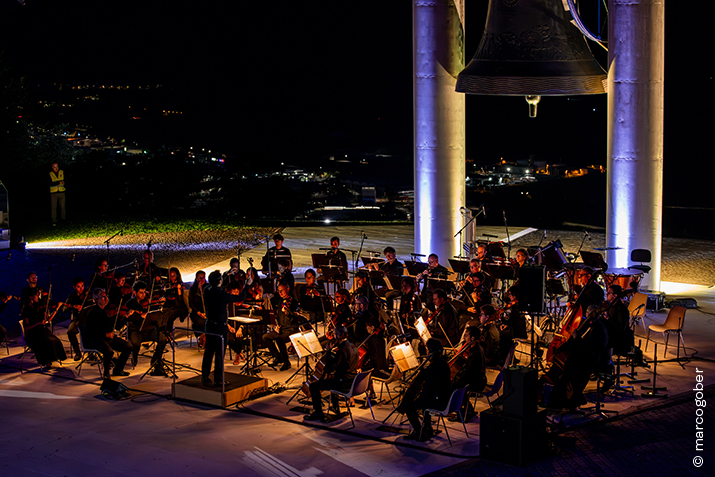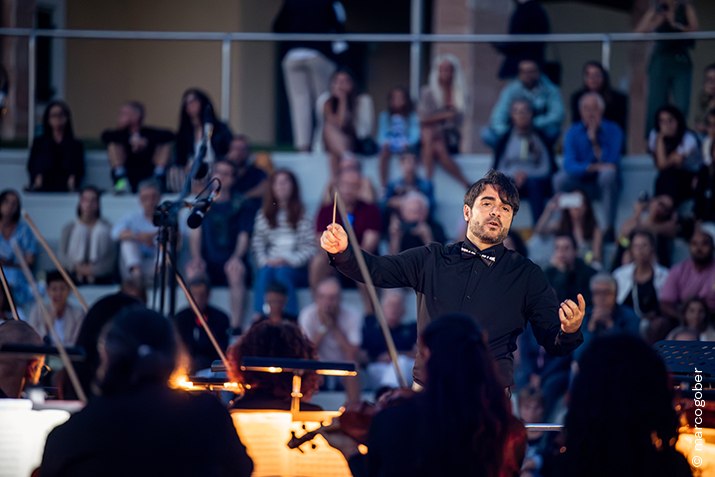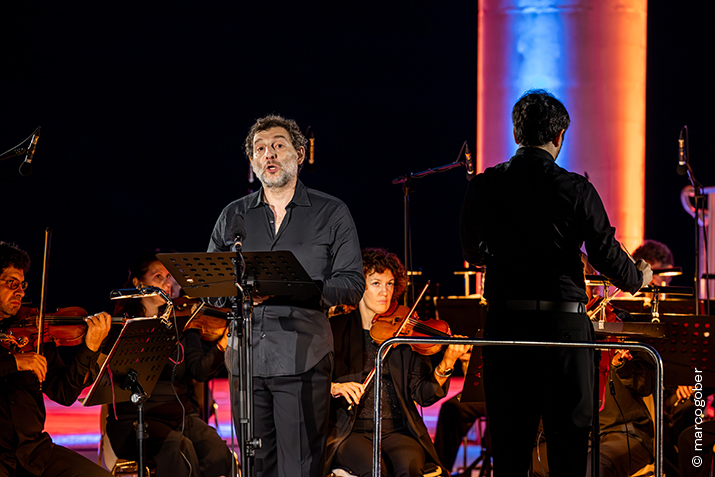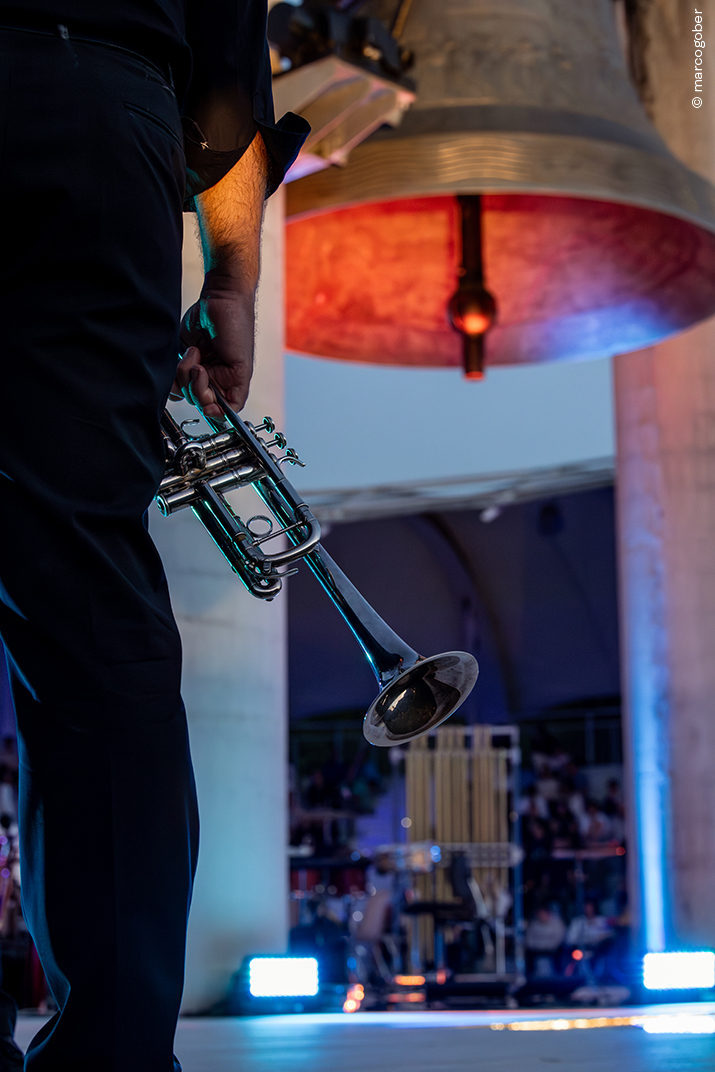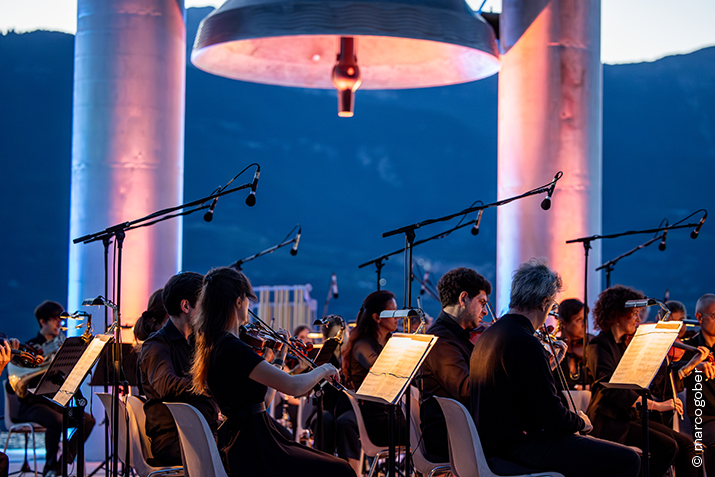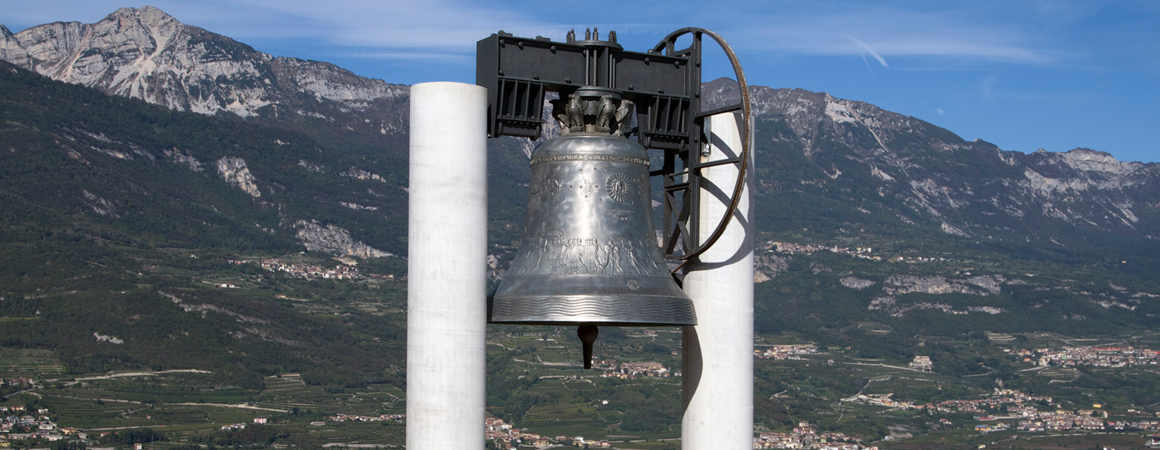THE HAYDN ORCHESTRA AT THE CAMPANA DEI CADUTI FOR THE FIRST TIME
On the Colle di Miravalle, music spoke to the heart. On 21 July, in front of the Bell, a universal symbol of peace and memory, a concert took place, intertwining art with reflection, beauty with awareness. The evening featured the Haydn Orchestra of Bolzano and Trento, conducted by Nicola Valentini, alongside baritone Bruno Taddia. An audience of more than 400 listened intently to a thoughtfully curated program that both examined the present and opened a mindful window onto the future. It was the first time the Haydn Orchestra performed at the Colle, and since the Centenary of Maria Dolens is not merely a celebration of the past, but above all the beginning of a new journey, this evening appeared as a promising signpost. The initiative was made possible thanks to a fruitful collaboration between the Municipality of Rovereto, the Haydn Foundation, and the Bell. Before the concert, the Director Marco Marsilli highlighted that the initiative aligns “with the direction indicated by the President of the Republic, Sergio Mattarella, who during his recent visit to the Campana dei Caduti stressed how the current international situation calls for ‘a revival of the message that was launched from here a hundred years ago.” In the same vein, Paul Gasser, President of the Haydn Foundation, emphasised that “for the Foundation and the Orchestra, it is a pleasure and an honour to collaborate with the Municipality of Rovereto and the Campana dei Caduti”. “We are confident,” he concluded, “that music, with its universal language, will this evening strengthen the message of peace that this evocative site in Rovereto, through the presence of Maria Dolens, naturally evokes”. The Mayor of Rovereto, Giulia Robol, also reaffirmed that “Peace is not a utopia, but a collective work, a harmony built day by day”. Music, like the Bell, she added, “reminds us that even from the darkest moments a melody of hope can arise”.
Marcello Filotei, Artistic Director of the Campana dei Caduti and editor of this monthly publication, briefly explained the concept behind the musical programme: “It was conceived as a journey beginning with reflection on the ongoing conflicts in certain regions of the world, moving through hope, and culminating in a quiet, understated joy”.
The evening opened with two of Jean Sibelius’s most evocative works: Valse triste (1904) and Scena con gru, completed in 1906. Not merely splendid concert pieces, they are also musical reflections on the fragility of the human condition and the silences that accompany great change. In times marked by conflict and instability, these compositions resonate as a meditation on the uncertainty of our era. According to Ralph Vaughan Williams, “only Sibelius could make the sound of C major completely new.” These prophetic words, spoken by one of the Finnish composer’s peers, describe his ability to give a voice to the inexpressible, through soundscapes suspended between melancholy and vision, combining simplicity with depth of thought. Like a butterfly - at once splendid and desperate - that cannot find a place to rest.
This was followed by Pax Virginis by Virginia Guastella, winner in 2008 of the International Composition Competition “Strumenti di Pace” (Instruments of Peace), an initiative that unfolded over three biennial editions and brought major figures of contemporary music to the Bell, including the unforgettable Ennio Morricone, who gifted his Jerusalem to Maria Dolens. Guastella’s composition led the music into a deeply personal spiritual realm, shifting between passages of intense expressiveness and sudden moments of rarefied stillness. Conceived as a sonic meditation on Peace, the work interlaces words from three major religious traditions: the Psalms of the Old Testament (“May the mountains bring Peace to the people, and the hills justice!”), the Gospel of Matthew (“Blessed are the Peacemakers, for they shall be called children of God”), and the Quran (“Peace be upon you, for you have been steadfast”). Seventeen years after its composition, the work remains, regrettably, profoundly relevant, as it explicitly calls for a path toward the peaceful coexistence of peoples who adhere to monotheistic religions. Bruno Taddia’s warm, resonant voice rendered these verses vibrantly, blending with great elegance and naturalness with the orchestra, which created a soundscape charged with tension and hope.
The evening concluded with Franz Schubert’s Fifth Symphony, bringing a breath of quiet serenity. Free from any hint of triumphalism, the work speaks in a luminous and sincere language, evoking a serene, quiet joy that offers both refuge and comfort. In this context, Schubert is not escapism but a remembrance of everything what is worth striving for: beauty, harmony, shared life, dialogue, and Peace.
The audience, at times visibly moved, applauded long and enthusiastically, showing that they had grasped the common thread uniting the different pieces: the urgent need for Peace, the power of hope, and the ability of music to unite, heal, and inspire. Despite the success, out of respect for the location and the journey of the performance, the artists refrained from self-congratulatory encores. The purpose of the performance was rather to reflect on what had occurred. And, as always on the Colle di Miravalle, reflection is guided by the hundred solemn tolls of the Campana dei Caduti that conclude every event. Once again, at a time when words often seem empty, it was music that restored our sense of the present, with sobriety and profound emotion.
